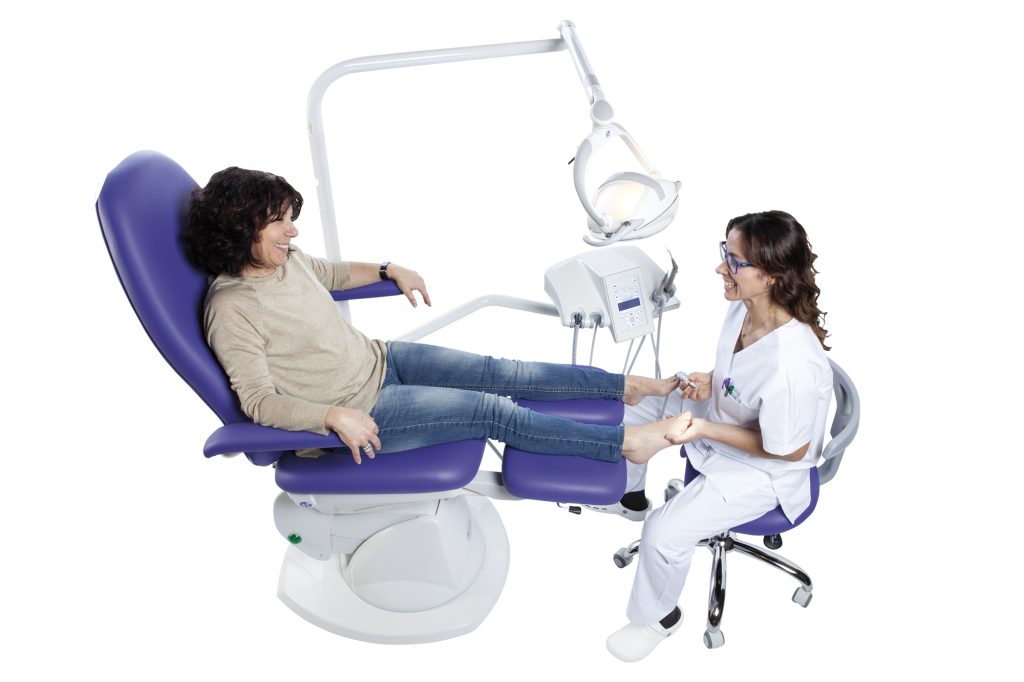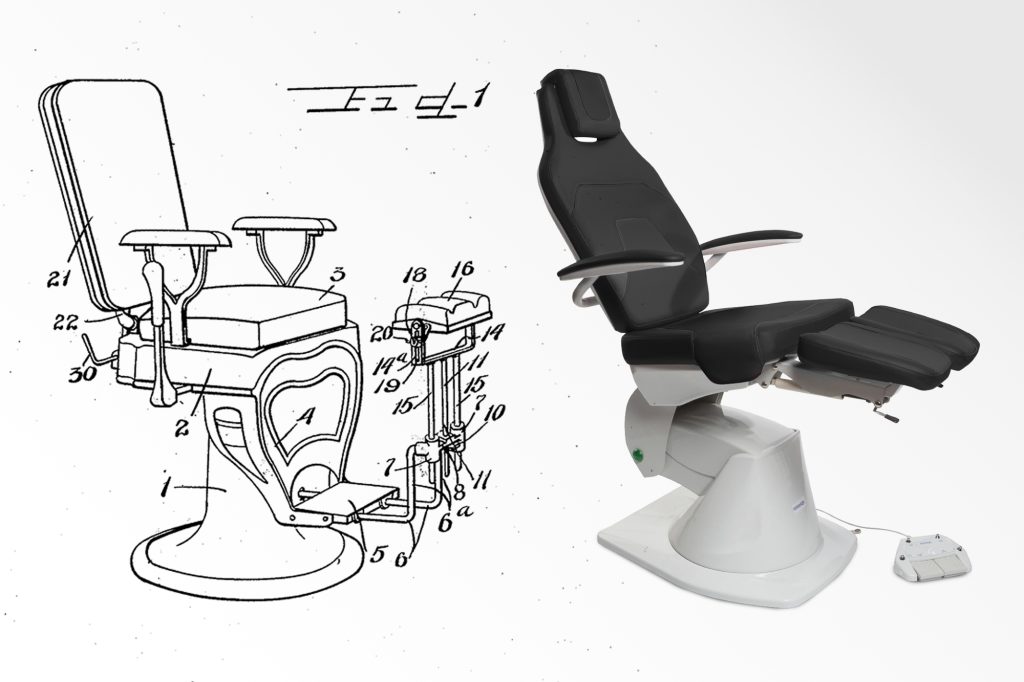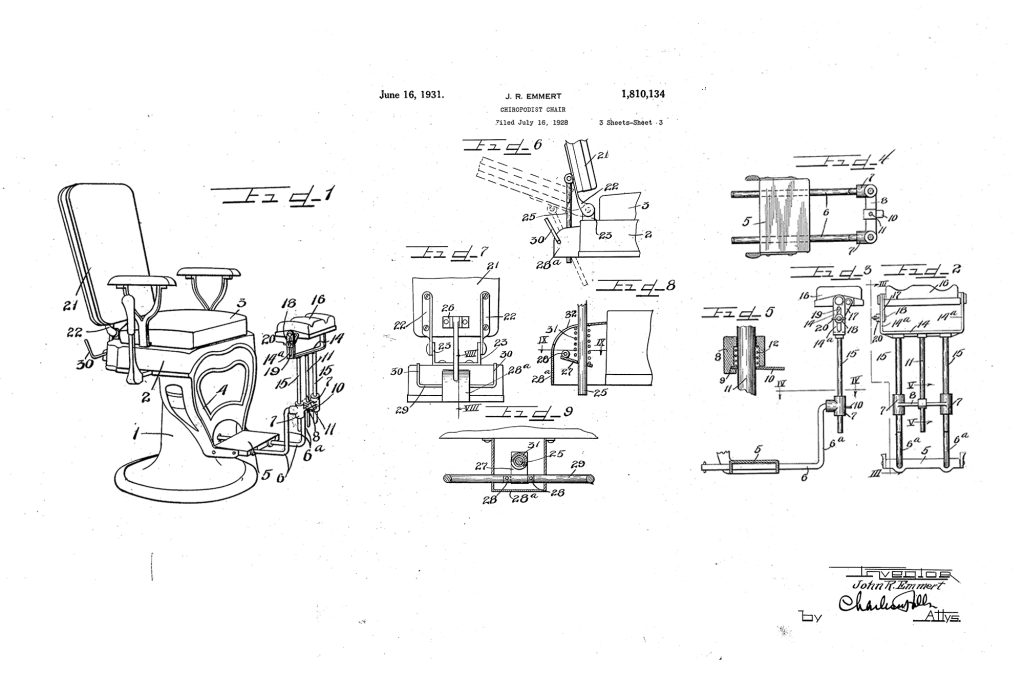Imagine a podiatry practice in the 1930s with a Podiatric Chair. A small office, barely lit by dim lighting, and an uncomfortable chair where patients sat, waiting for their doctor to help them with a foot ache. There was no cutting-edge technology, nor ergonomic podiatry chairs. Foot treatment was performed with basic tools, and working positions for both podiatrists and patients were anything but comfortable.
Today, the scene has changed radically. The modern podiatry chair is a piece of engineering, a seat that offers comfort, functionality, and precision, tailored for both podiatrist and patient. But this transformation didn’t happen overnight. It was a story of small advances, of ideas that took shape, and of the tireless pursuit of improvement. And in this journey, companies like Namrol played a pivotal role, ushering podiatry into a new era.
First Steps: The Challenge of Comfort
At the beginning of the 20th century, podiatry was not what we know today. There were no chairs specifically designed for foot treatment, much less one that allowed for adjustments in height, tilt, or the support needed to facilitate more ergonomic work. Podiatrists used whatever was on hand: common chairs, makeshift stretchers, and, at best, a few pieces of furniture designed for other medical purposes.
Patients sat rigidly, and the podiatrist, often forced into awkward postures for long hours, was unable to provide the best possible care. The situation was more than discomfort; it was an unmet need for the industry to evolve.

The Tipping Point: The Arrival of Innovation
As time passed, podiatry took shape as a medical specialty, and with it, the need for appropriate furniture became evident. In the 1950s, the first adjustable chairs appeared, marking a paradigm shift in foot care. Now, podiatrists could adjust the height of the chair, and for the first time, patient comfort was prioritized.
But, like all great ideas, these early versions weren’t perfect. They were basic chairs with manual mechanisms that, while better than previous chairs, still lacked the precision and ease that podiatrists needed to work comfortably. The revolution in podiatry had only just begun.
Gradual Development (1960s-1980s): Slow but Steady Evolution
- Reclining chairs: The ability to recline the chair’s backrest increased, improving patient comfort and facilitating the podiatrist’s work.
- Hydraulic mechanisms: Chairs began to incorporate hydraulic systems for more efficient and smooth height adjustments, representing an advance over manual mechanisms.
The Technological Revolution (1990s-2000s): Specialization and Automation
Beginning in the 1990s, the podiatry industry began to undergo a true revolution. This change was due to several factors:
- Increased specialization in medical equipment: With the growing specialization in podiatry, manufacturers began to develop chairs specifically designed for the needs of podiatrists. These chairs began to incorporate more electrical adjustments, allowing the practitioner to modify the angle of the feet, the backrest, the patient’s position, etc., with the touch of a button.
- Advances in ergonomics and comfort: Ergonomics became a priority. More comfortable and functional chairs were introduced, with more precise tilting systems and surfaces that better adapted to the shape of the human body. Additionally, the upholstery was improved for easier cleaning and durability.
- Advanced Technology: As technology advanced, chairs began to incorporate advanced electrical mechanisms that not only precisely adjusted positions but also provided an unprecedented level of comfort.
Namrol's Contribution to Modernization

The Future: Smart Technology and Personalization
The history of podiatry chairs doesn’t end today. On the horizon, a future full of possibilities looms. Technology continues to advance, and new trends point to greater automation and customization.
The chairs of the future could incorporate biometric sensors that automatically adjust the position according to the patient’s physical characteristics. Imagine a chair that, upon detecting the patient’s posture or specific needs, adjusts its inclination or height to offer maximum comfort and optimize treatment. There is also talk of incorporating artificial intelligence that could personalize the experience for each podiatrist, learning their preferences and adapting to them.
Furthermore, sustainability will be a key issue. The podiatry chairs of the future could be made with recyclable, environmentally friendly materials, without compromising quality and functionality.
The history of podiatry chairs continues to be written, and what is certain is that the next page is full of new opportunities for comfort and foot care, and at Namrol, we will continue working for the success of professionals.

